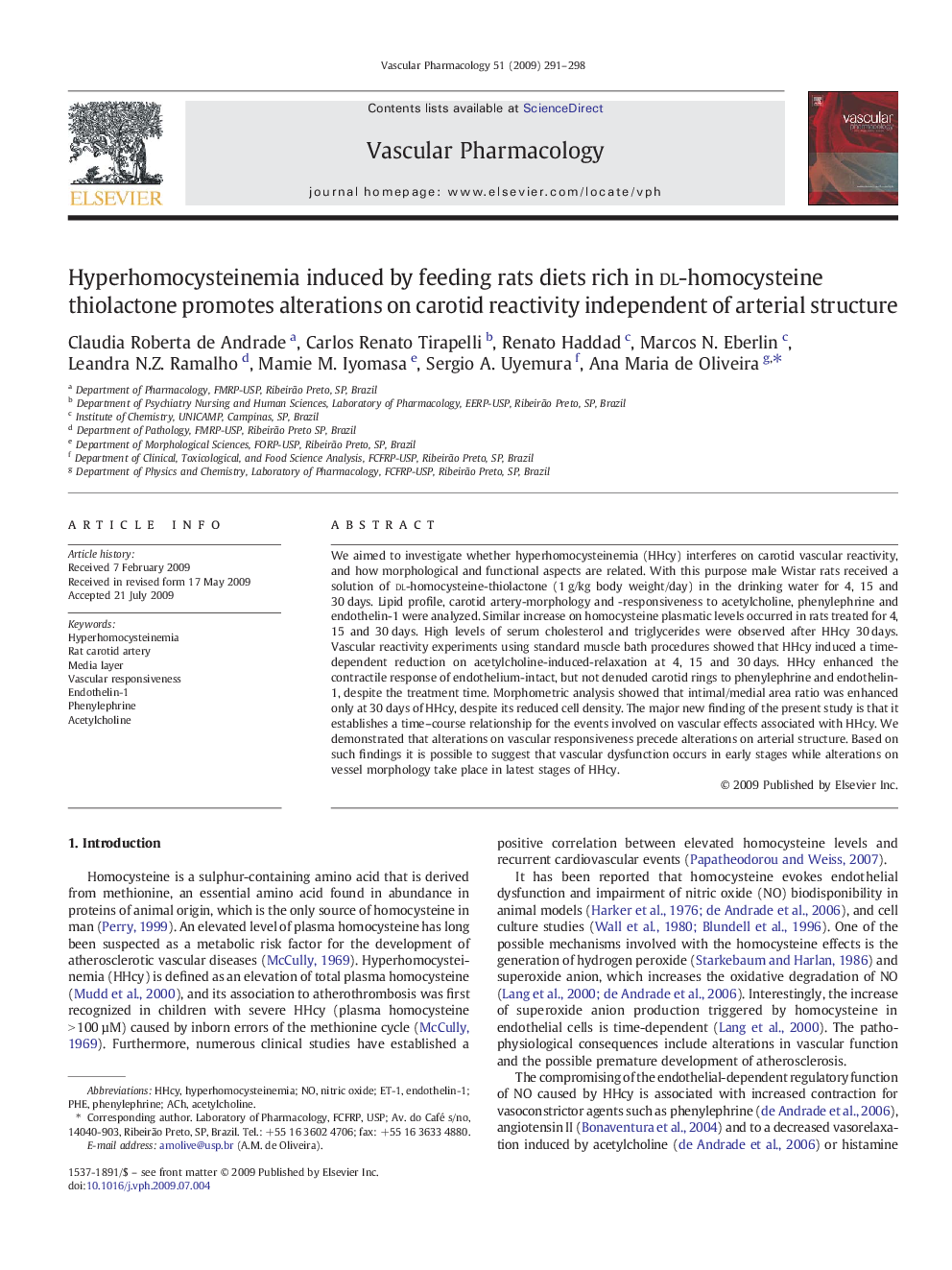| Article ID | Journal | Published Year | Pages | File Type |
|---|---|---|---|---|
| 2574527 | Vascular Pharmacology | 2009 | 8 Pages |
We aimed to investigate whether hyperhomocysteinemia (HHcy) interferes on carotid vascular reactivity, and how morphological and functional aspects are related. With this purpose male Wistar rats received a solution of dl-homocysteine-thiolactone (1 g/kg body weight/day) in the drinking water for 4, 15 and 30 days. Lipid profile, carotid artery-morphology and -responsiveness to acetylcholine, phenylephrine and endothelin-1 were analyzed. Similar increase on homocysteine plasmatic levels occurred in rats treated for 4, 15 and 30 days. High levels of serum cholesterol and triglycerides were observed after HHcy 30 days. Vascular reactivity experiments using standard muscle bath procedures showed that HHcy induced a time-dependent reduction on acetylcholine-induced-relaxation at 4, 15 and 30 days. HHcy enhanced the contractile response of endothelium-intact, but not denuded carotid rings to phenylephrine and endothelin-1, despite the treatment time. Morphometric analysis showed that intimal/medial area ratio was enhanced only at 30 days of HHcy, despite its reduced cell density. The major new finding of the present study is that it establishes a time–course relationship for the events involved on vascular effects associated with HHcy. We demonstrated that alterations on vascular responsiveness precede alterations on arterial structure. Based on such findings it is possible to suggest that vascular dysfunction occurs in early stages while alterations on vessel morphology take place in latest stages of HHcy.
Graphical abstractFigure optionsDownload full-size imageDownload as PowerPoint slide
